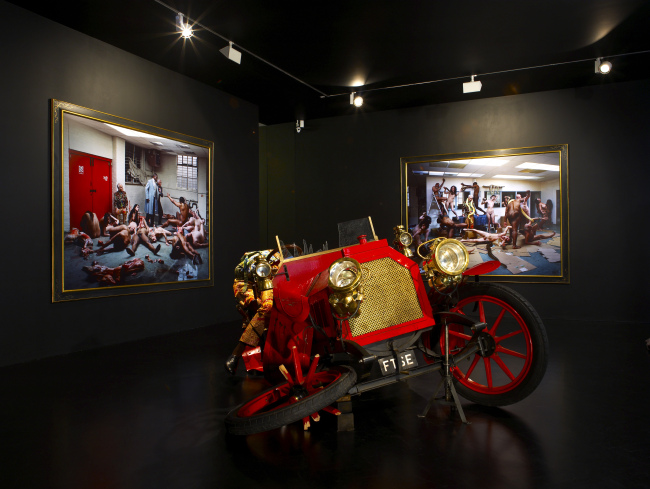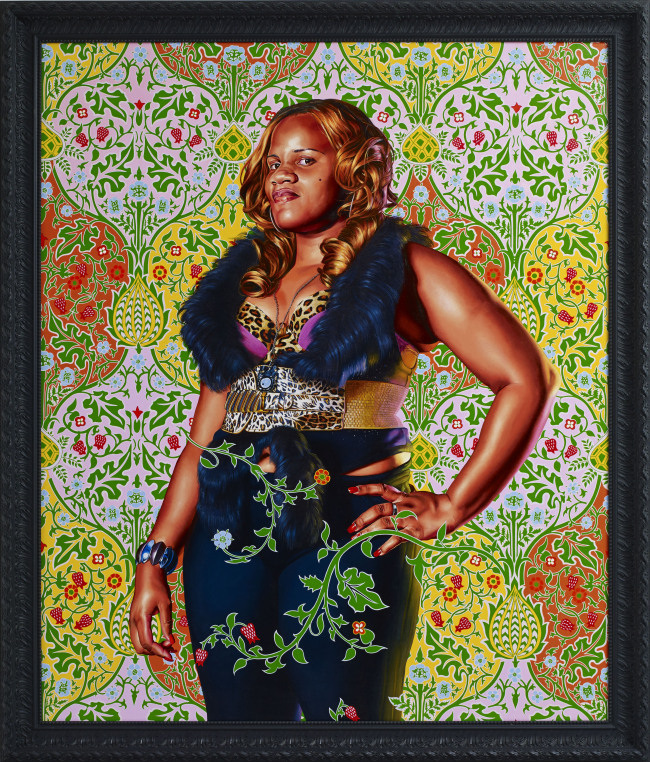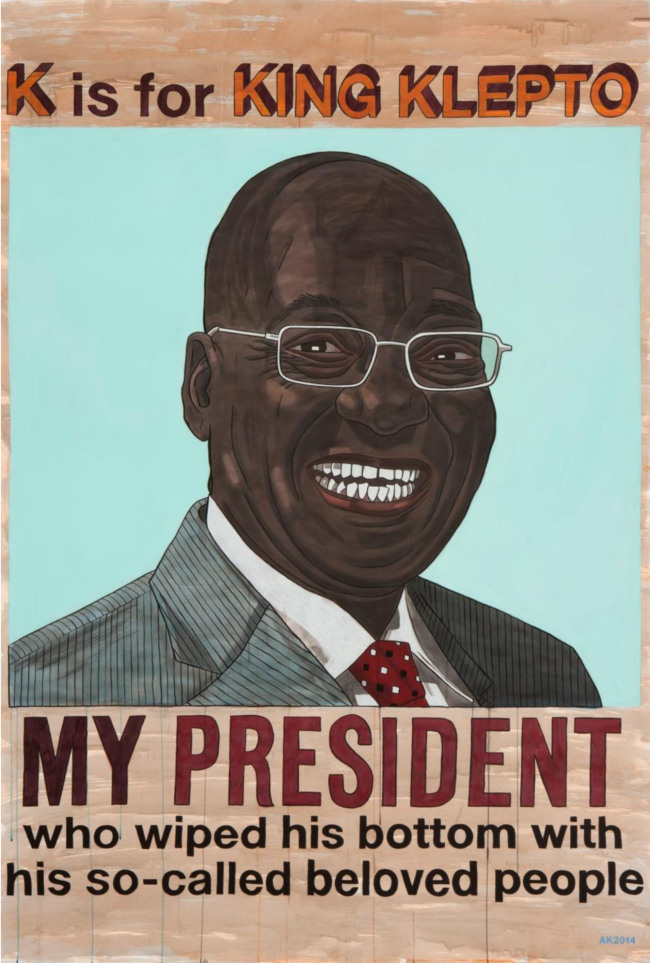African art show explores class, race, migration
Seoul Museum of Art is showcasing contemporary African art as part of a project to introduce nonmainstream art
By Lee Woo-youngPublished : Dec. 17, 2014 - 20:36

A wide range of contemporary African art is being showcased for the first time in Korea. The Seoul Museum of Art has brought together foreign artists of African descent and ones based in African countries to introduce the overarching identity of African art to Korean art fans.
The exhibition is also attempting to bridge the geographical and cultural gap between Africa and Korea. On Jan. 23, a discussion among art experts and culture critics will look at racism and postcolonialism ― frequent subjects of debate around the world ― and racial and multicultural problems emerging in Korea, including those related to labor migration.
Although the exhibition is called “Africa Now,” it doesn’t define the identity of African art. The exhibition fails to represent the full spectrum of contemporary African art. Some 20 of the artists are not entirely from African countries. Most of them live and work in England, the U.S. or continental Europe. A few of them still live in their home countries and create works that involve pressing regional issues.
The exhibition is also attempting to bridge the geographical and cultural gap between Africa and Korea. On Jan. 23, a discussion among art experts and culture critics will look at racism and postcolonialism ― frequent subjects of debate around the world ― and racial and multicultural problems emerging in Korea, including those related to labor migration.
Although the exhibition is called “Africa Now,” it doesn’t define the identity of African art. The exhibition fails to represent the full spectrum of contemporary African art. Some 20 of the artists are not entirely from African countries. Most of them live and work in England, the U.S. or continental Europe. A few of them still live in their home countries and create works that involve pressing regional issues.


The artists with strong regional identities include South African artist Anton Kannemeyer and Goncalo Mabunda from Mozambique. Kannemeyer uses satirical cartoons to explore racism and colonialism ― issues that still dominate the political world of his country. Artist Mabunda deals with the 16-year civil war in his country. He uses parts of rifles, pistols, bullets and empty shells ― remains of the long war ― to assemble images such as a king’s throne and humorous faces.
Artists who live and work in Western countries refuse to be categorized as part of the African art movement. They try to focus on their individual characteristics and inspirations, like Joel Andrianomearisoa, who works and lives in Madagascar and Paris and explores the concept of time in his paper and fabric installation.
One of the highlights of the exhibition is the works of Yinka Shonibare, a British-Nigerian artist, whose works examine issues of race and class through paintings, sculpture, photography and film. His work also shows bits of his African identity through the fabric he uses for sculptures. The colorful batik fabric he buys in London became a sign of African identity and independence after it was mass-produced by the Dutch and sold to the colonies in West Africa in the 1960s.
Shonibare is well known as one of the “Young British Artists” along with Damien Hirst and Tracey Emin, whose works dominated the global art world in the 1990s. The works of the British-Nigerian artist have been featured at major international exhibitions including Kassel Documenta and at major galleries around the world.
“Shonibare is well known in the global art world and symbolizes the cultural diversity in British society. But he was introduced to the Korean audience later than leading YBA artists. He’s an example of the fact that Africa is not the center of attention for Koreans,” Shin said.
The museum said it will continue to show Korean audiences nonmainstream art next year.
For more information, call (02) 2124-8800.
By Lee Woo-young (wylee@heraldcorp.com)



![[Exclusive] Korean military set to ban iPhones over 'security' concerns](http://res.heraldm.com/phpwas/restmb_idxmake.php?idx=644&simg=/content/image/2024/04/23/20240423050599_0.jpg&u=20240423183955)




![[Herald Interview] 'Amid aging population, Korea to invite more young professionals from overseas'](http://res.heraldm.com/phpwas/restmb_idxmake.php?idx=644&simg=/content/image/2024/04/24/20240424050844_0.jpg&u=20240424200058)
![[Pressure points] Leggings in public: Fashion statement or social faux pas?](http://res.heraldm.com/phpwas/restmb_idxmake.php?idx=644&simg=/content/image/2024/04/23/20240423050669_0.jpg&u=)









